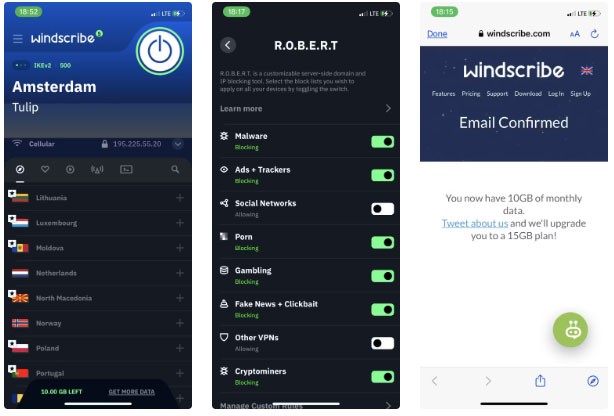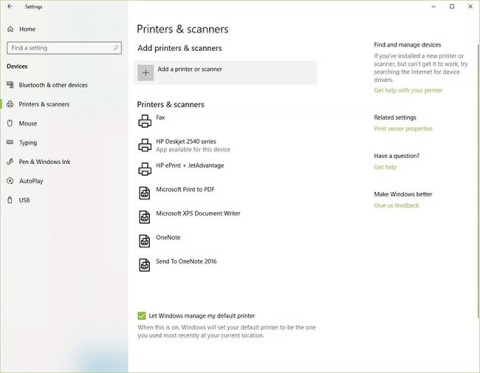The most commonly deficient nutrients in the diet

Diet is important to our health. Yet most of our meals are lacking in these six important nutrients.
The interconnectivity between everyday devices achieved through Internet of Things (IoT) technology creates insights to improve our living conditions and increase efficiency. But this also has its downsides, including IoT botnet attacks.
There is no doubt that IoT attacks are dangerous, especially when many devices share the same network, so the focus should be on how to prevent these attacks.
Table of Contents
Cybercriminals carry out IoT botnet attacks by infecting computer networks with malware to compromise IoT devices. Once they gain remote access and control over the infected devices, hackers carry out a variety of illegal activities.
IoT botnet attacks are a numbers game. The more connected devices, the greater the impact on targeted systems. The goal is to cause data breaches through traffic chaos.

IoT botnet attacks target Internet-connected devices like smartphones, smartwatches , laptops, etc. Bots can be evasive. They remain hidden until the actors trigger a specific action.
A typical IoT botnet attack plays out in a number of ways.
The first step in an IoT botnet attack is to find a way to get into the target device. On the surface, every application appears to be secure, but most systems have some known or unknown vulnerabilities. It depends on how hard you look. They scan for vulnerabilities until they find a weak point and exploit it to gain access.
Once a vulnerability is discovered in the system, threat actors inject malware into the system and spread it across all devices on the shared IoT network.
IoT botnet attacks are not random. Attackers plan their operations and start from remote locations. The next step is to connect the devices to servers in the hackers’ control room. Once a working connection is established, they execute their plan of action.
Shared connectivity between IoT devices is beneficial to threat actors. It allows them to compromise multiple applications with a single command, saving time and resources.
Hackers have a variety of motives when it comes to IoT botnet attacks. While stealing sensitive data is a common goal, that’s not always the case. Money is obviously the primary goal, so cybercriminals may take over your system and demand a ransom before they’ll restore your access. But there’s no guarantee they’ll give it back.

There are several cyber attack methods that are suitable for IoT botnet attacks. These are the techniques that threat actors commonly use.
A distributed denial of service (DDoS) attack is the process of sending a large amount of traffic to a system with the intent of causing downtime. The traffic is not coming from users, but from compromised computer networks. If threat actors compromise your IoT devices, they can use it to direct traffic to their targets in a DDoS attack.
When the system receives entries that exceed its capacity, it registers a traffic congestion condition. It can no longer operate or process the valid traffic that actually needs to be accessed.
Brute Force is the use of “forcing” to gain unauthorized access to applications by trying multiple usernames and passwords to find a match. A trial-and-error login technique, the cyber attacker collects tons of credentials and systematically runs them through your system until one is successful.
Brute Force attacks on IoT systems are automated. Intruders use digital applications to generate different login combinations and rapidly try them on the target. In addition to making random guesses, they also try valid login credentials they have obtained from other platforms through credential theft.
Most phishing attacks take the form of email. A crook contacts you posing as a person or legitimate organization with a business offer. While many email service providers try to prevent this by redirecting messages from suspicious addresses to Spam, determined hackers will go to great lengths to ensure their messages reach your inbox. Once they have your attention, they trick you into revealing sensitive information, asking you to click on a malicious link, or opening a document infected with malware.
Sniffing is when someone intercepts or monitors network activities. It involves using a packet sniffer to access information while it is being transmitted. Hackers also use this method to inject malware into a system for further exploitation.
Hackers deploying IoT botnet attacks use proactive Sniffing to flood the network with traffic and inject malware into it to extract personally identifiable information or take control of your connected devices.

The upsides of using IoT technology often outweigh the downsides. However, you will still be concerned about botnet attacks, so how do you prevent them?
The apps on your IoT devices create weaknesses that make them vulnerable to attack. The more apps you have, the more opportunities cybercriminals have to break in. Half the time, you don’t even use all of them!
When scanning your network for weak links, hackers can discover apps that are not working. They are useless to you and leave you vulnerable to attack. Reducing the number of apps on your connected devices is a preventative measure against related attacks.
Virtual Private Networks (VPNs) provide much-needed privacy and security. Intruders can intercept your data by compromising your Internet Protocol (IP) address on your local area network (LAN) . This is possible because they can see and monitor your network.
VPNs keep your connection private and encrypt your data, making it impossible for intruders to access it. Every interaction on your device is properly secured from third parties. Hackers won't be able to determine your location, let alone intercept your network.
Many users make it easy for hackers by creating weak passwords. Using familiar names and numbers as passwords is one of the biggest mistakes you can make. If your password is too simple, it will be easy for attackers to crack.
Make your passwords more complex by combining uppercase and lowercase letters with numbers and special characters. Learn to use phrases instead of single words. You can create the most complex passwords, but remembering them can be difficult. Using an effective password manager will solve this challenge.
Outdated security features in IoT devices leave you open to cyberattacks. If the software vendor does their part by upgrading their defenses, you can at least implement those updates.
Just update your active applications (assuming you've removed the inactive ones). That way, you don't have to worry about vulnerabilities from outdated infrastructure.
IoT devices are just like any other device when it comes to security. Use them with cybersecurity in mind, or you will be exposed to cyber threats.
Don’t get caught up in app features. Verify security features before you buy and add sensitive data. It’s easy to protect your IoT devices from cyberattacks, but you need to be proactive first.
Diet is important to our health. Yet most of our meals are lacking in these six important nutrients.
At first glance, AirPods look just like any other true wireless earbuds. But that all changed when a few little-known features were discovered.
In this article, we will guide you how to regain access to your hard drive when it fails. Let's follow along!
Dental floss is a common tool for cleaning teeth, however, not everyone knows how to use it properly. Below are instructions on how to use dental floss to clean teeth effectively.
Building muscle takes time and the right training, but its something anyone can do. Heres how to build muscle, according to experts.
In addition to regular exercise and not smoking, diet is one of the best ways to protect your heart. Here are the best diets for heart health.
The third trimester is often the most difficult time to sleep during pregnancy. Here are some ways to treat insomnia in the third trimester.
There are many ways to lose weight without changing anything in your diet. Here are some scientifically proven automatic weight loss or calorie-burning methods that anyone can use.
Apple has introduced iOS 26 – a major update with a brand new frosted glass design, smarter experiences, and improvements to familiar apps.
Yoga can provide many health benefits, including better sleep. Because yoga can be relaxing and restorative, its a great way to beat insomnia after a busy day.
The flower of the other shore is a unique flower, carrying many unique meanings. So what is the flower of the other shore, is the flower of the other shore real, what is the meaning and legend of the flower of the other shore?
Craving for snacks but afraid of gaining weight? Dont worry, lets explore together many types of weight loss snacks that are high in fiber, low in calories without making you try to starve yourself.
Prioritizing a consistent sleep schedule and evening routine can help improve the quality of your sleep. Heres what you need to know to stop tossing and turning at night.
Adding a printer to Windows 10 is simple, although the process for wired devices will be different than for wireless devices.
You want to have a beautiful, shiny, healthy nail quickly. The simple tips for beautiful nails below will be useful for you.













